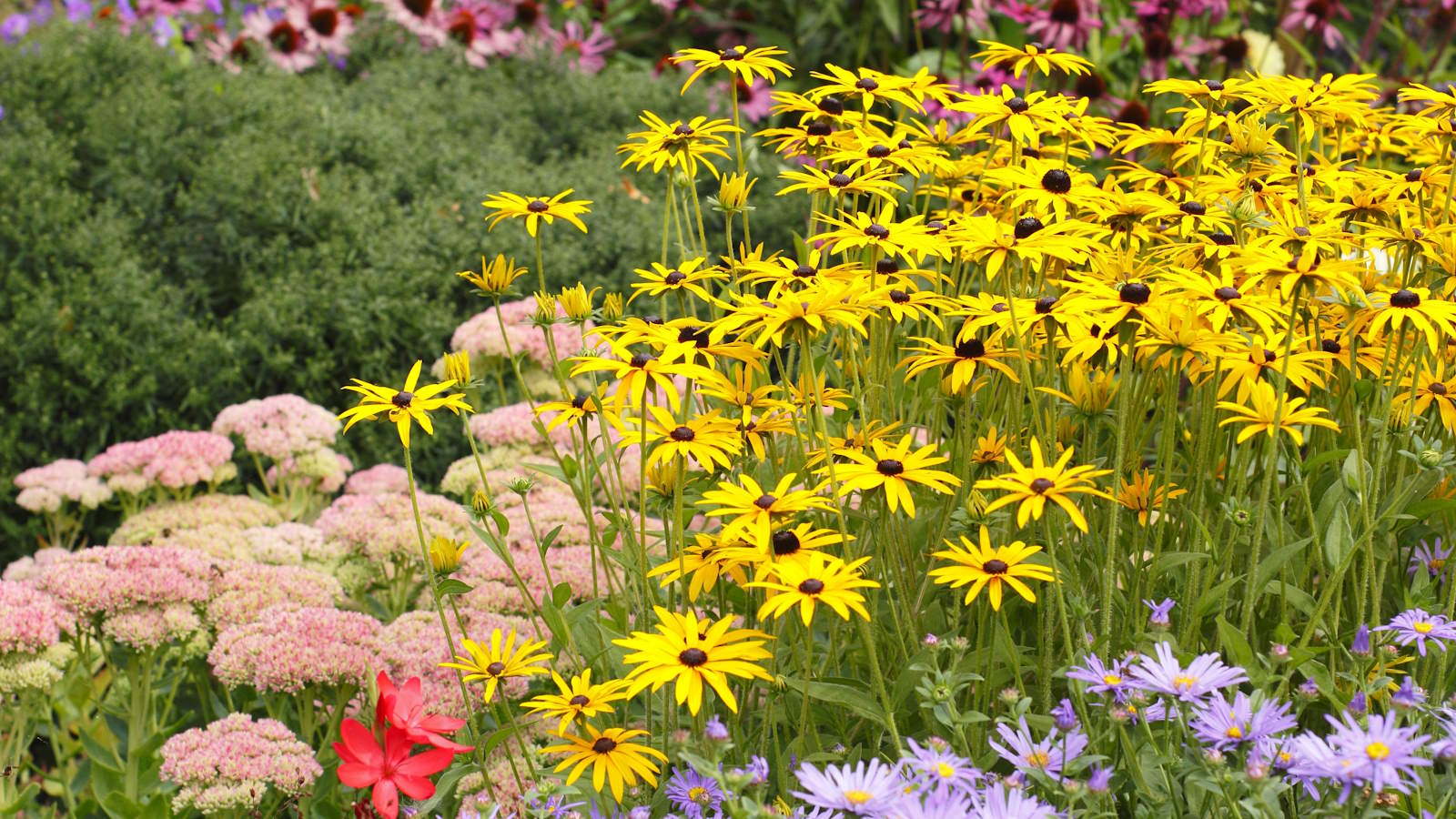
It may sound counterintuitive, but there are real benefits to cutting back herbaceous perennials early in the season. Commonly known as ‘The Chelsea Chop’ in the UK, where it annually coincides with the RHS Chelsea Flower Show, cutting back at the end of May and early June is a great pruning tactic.
Perennials quickly grow in spring as the temperatures rise and the hours of sunlight increase. The risk of simply letting them grow untouched is that they can get leggy and so tall that their weak stems flop when blooming.
That is where chopping back summer-flowing perennials in your flower beds is advantageous as it produces more upright, neat, and compact plants. They will be bushier and have lots of side shoots to flower on. It can even reduce the need to stake plants for the summer.
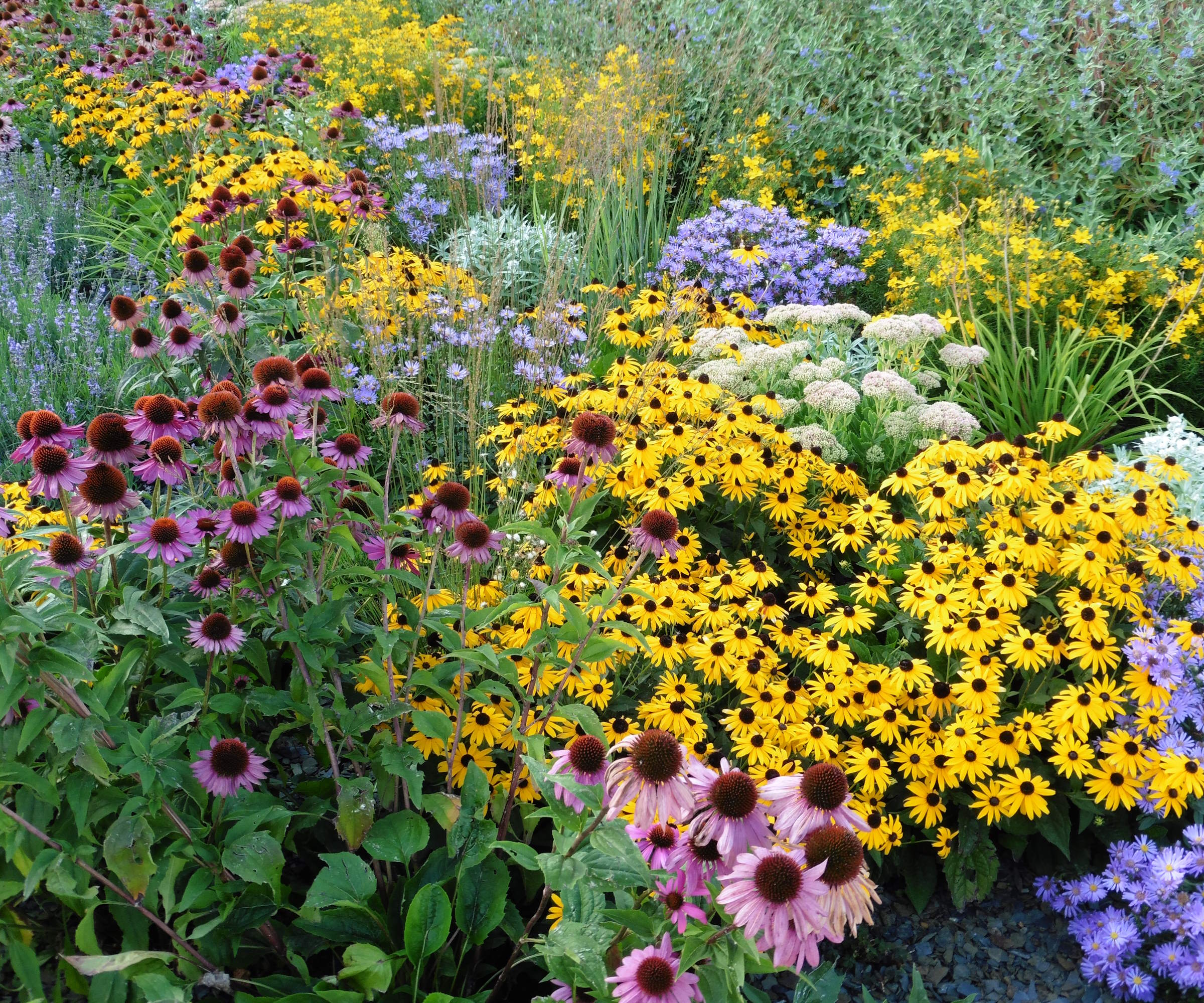
How much to chop, and why
You can take a pair of clean and sharp pruning shears and cut down the herbaceous perennials by a third or up to a half. When chopping back the perennials, why not consider cutting some stems but not others?
Either chop some stems of one plant, but not all, or cut one plant and not the other if you have multiple plants. Using this technique can help give you a staggered and longer flowering period.
We reveal 7 plants ideally suited to being cut back this month.
1. Yarrow
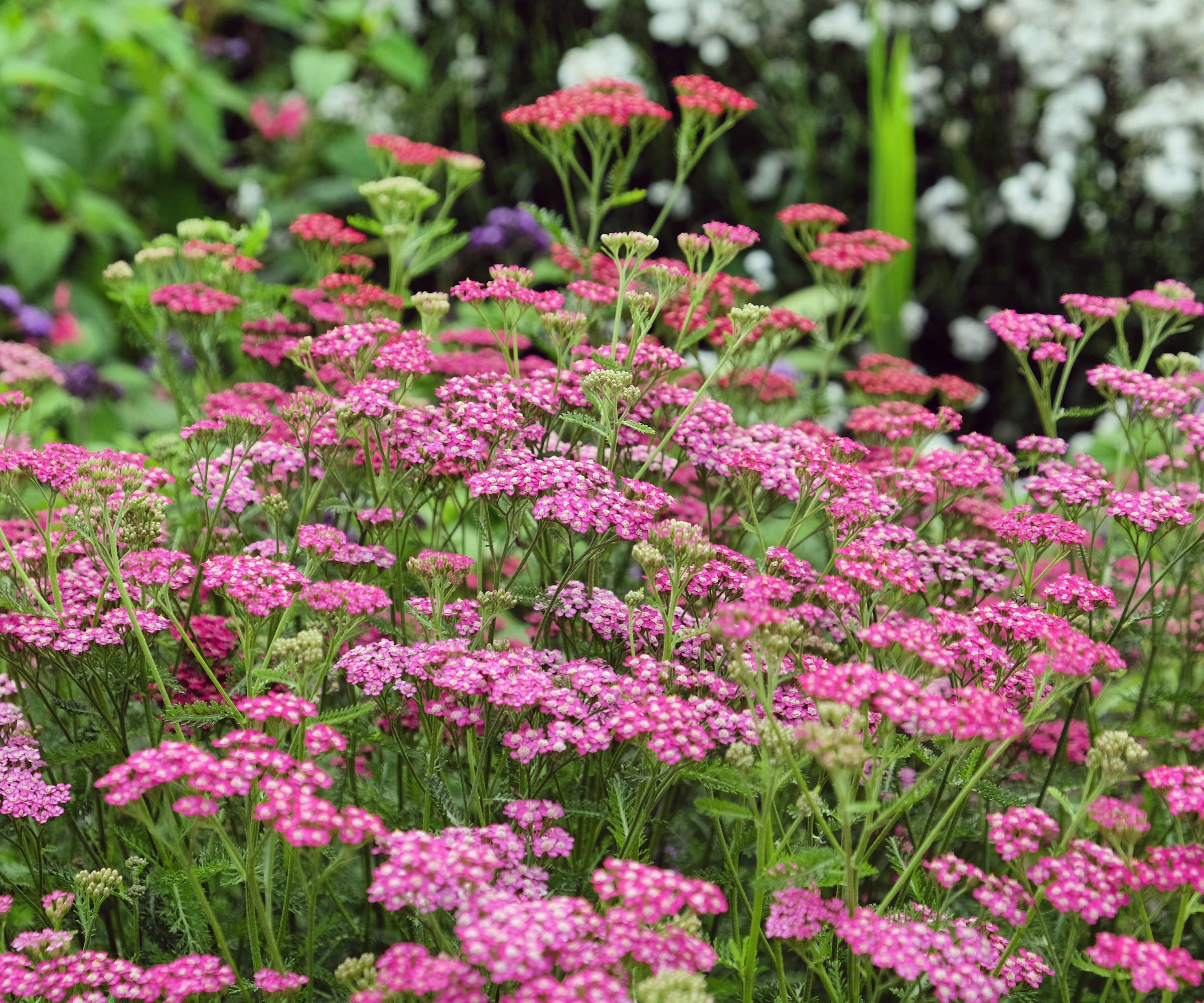
Yarrow, also known as achillea, is a low-maintenance drought-tolerant perennial wildflower that is a popular choice for flower borders or colorful containers. It produces clusters of small flowers with flat tops that come in a variety of bright colors, including pink, red, yellow, and white.
Yarrow is also a great pick for wildlife garden ideas as it is popular with pollinators, including bees, butterflies, and hoverflies. Once the plant is blooming, deadheading yarrow can give you a long season of blooms. Whenever you cut yarrow, wear gloves and long sleeves as the plant can irritate people with sensitive skin.
A pair of bamboo knit gloves to naturally keep hands cool and comfortable. The stretch in the gloves gives wearers a comfortable fit, allowing for greater dexterity. The bamboo is grown sustainably without the use of pesticides and harsh chemicals.
2. Aster
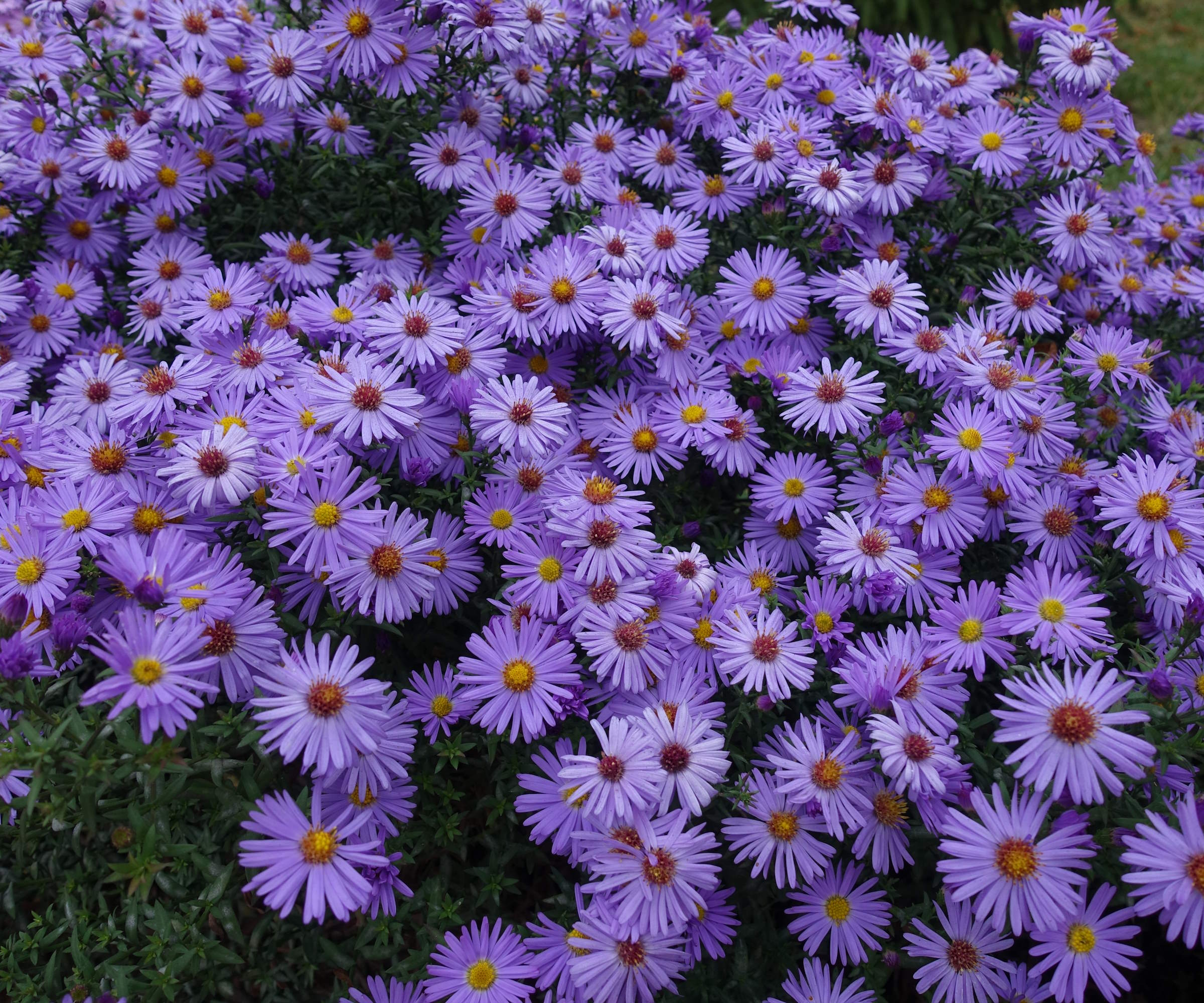
Asters are also known as Michaelmas daisies, due to their daisy-like appearance, and they provide splashes of color in late summer and fall.
There are hundreds of varieties in the aster family, coming in shades of blue, pink, red, purple, and white. Asters are hardy in US hardiness zones 4-8 and the plants are loved by fall pollinators, as well as asters being great plants for birds.
Some types of asters can reach six feet in height, so chopping them back stops them from getting too leggy and flopping later in the year.
3. Coneflower
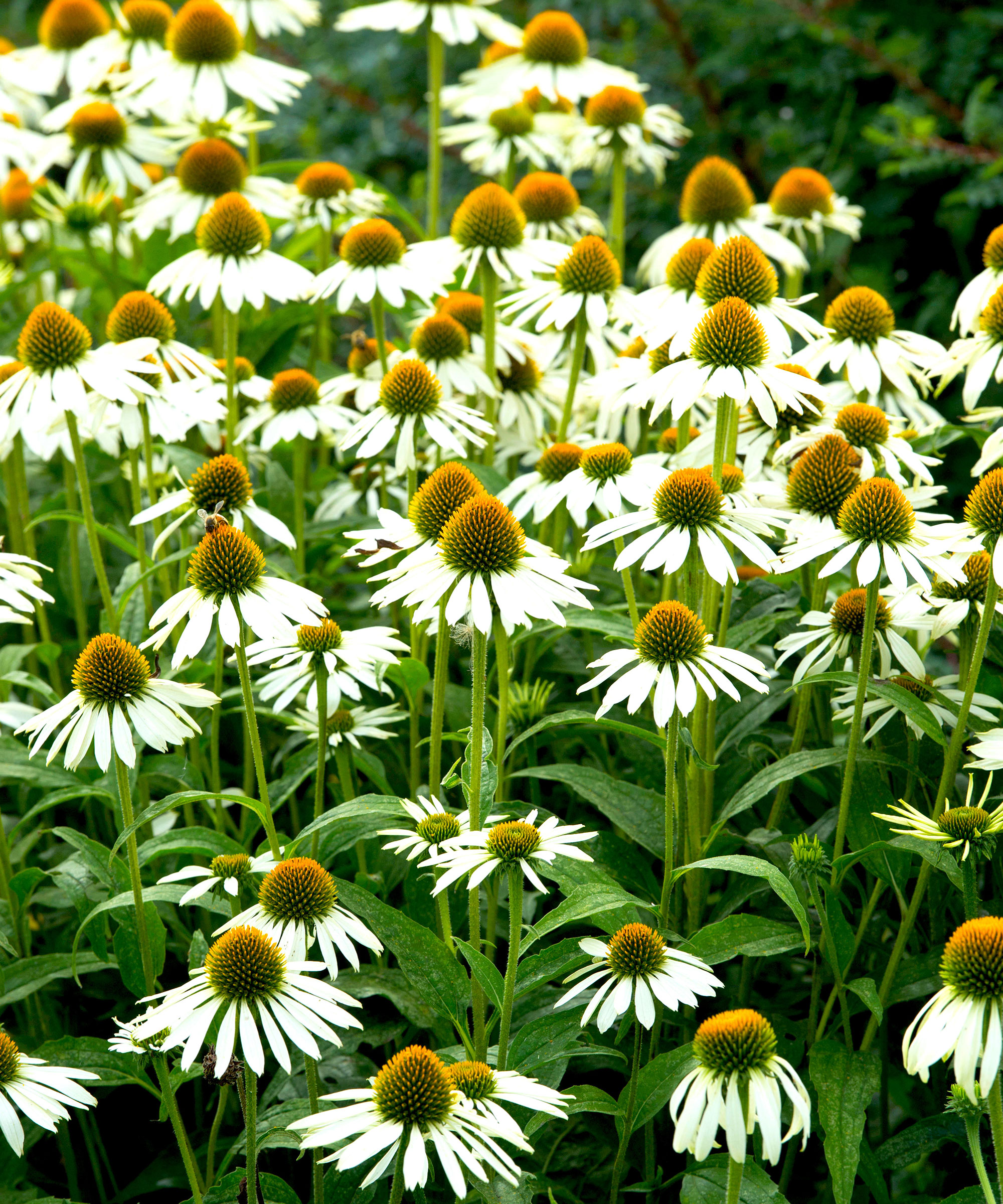
Coneflowers, which are also commonly known as echinacea, are a native American perennial that grows in clumps and can reach heights of four feet each year.
They are great plants for butterflies and coneflowers can also be great options for a cut flower garden. Many coneflower varieties will flower for many months, from early summer through till the first frosts arrive.
Chopping some of the stems back by a third in spring will help extend the season, and the task of regularly deadheading coneflowers is also recommended to reward you with the most blooms.
4. Penstemon
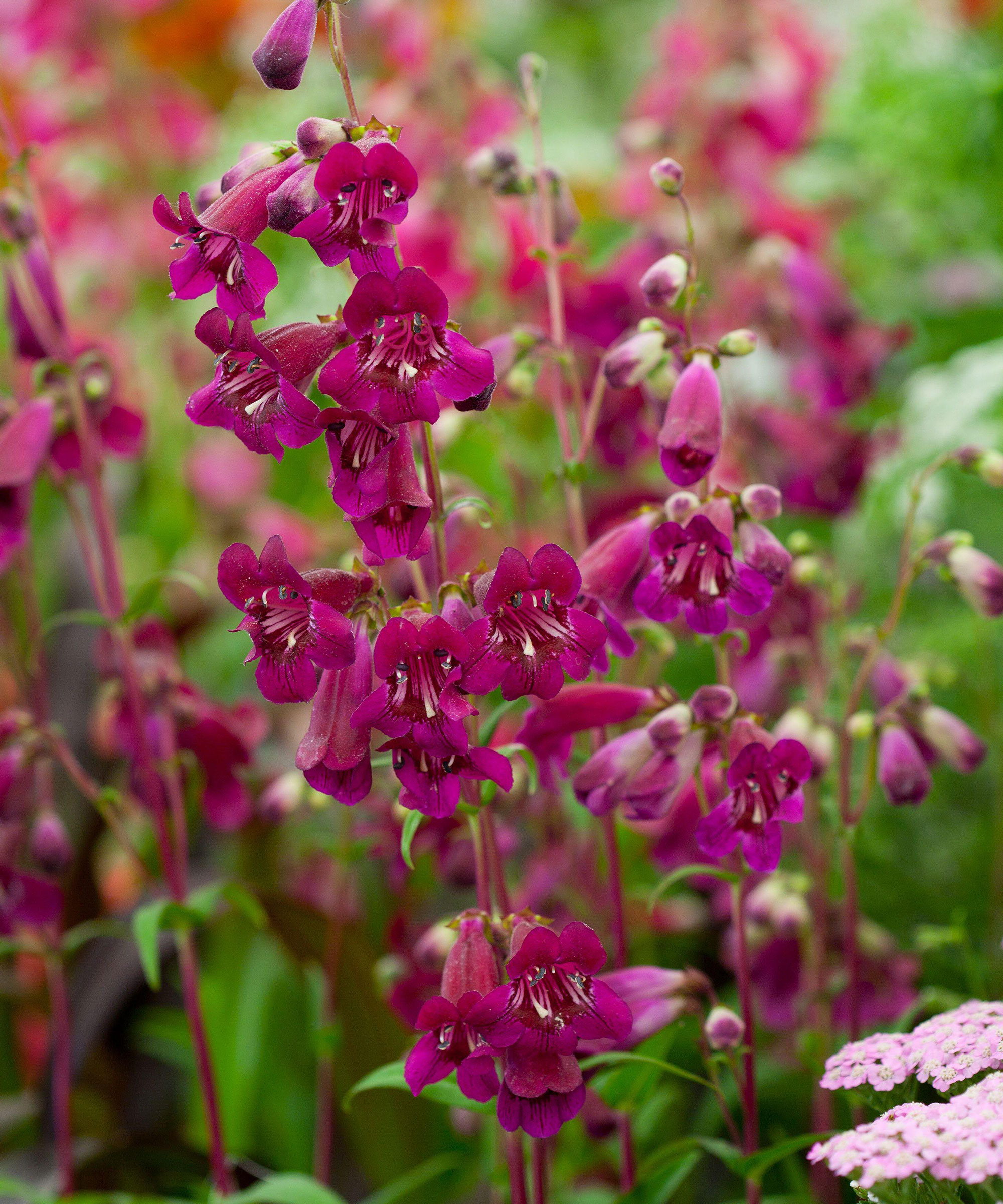
Penstemon, or beardtongue, are very reliable and prolific summer-flowering perennials that always impress with their large spikes of tubular flowers.
There are hundreds of species to pick from in a plethora of colors and a range of sizes - so there should be a penstemon for any bed or border.
Penstemon are great plants for pollinators, the flowers attract hummingbirds and are plants that attract bees to a backyard space. Chopping back such tall perennials will mean lots of flowers for both you and the bees to enjoy.
5. Phlox
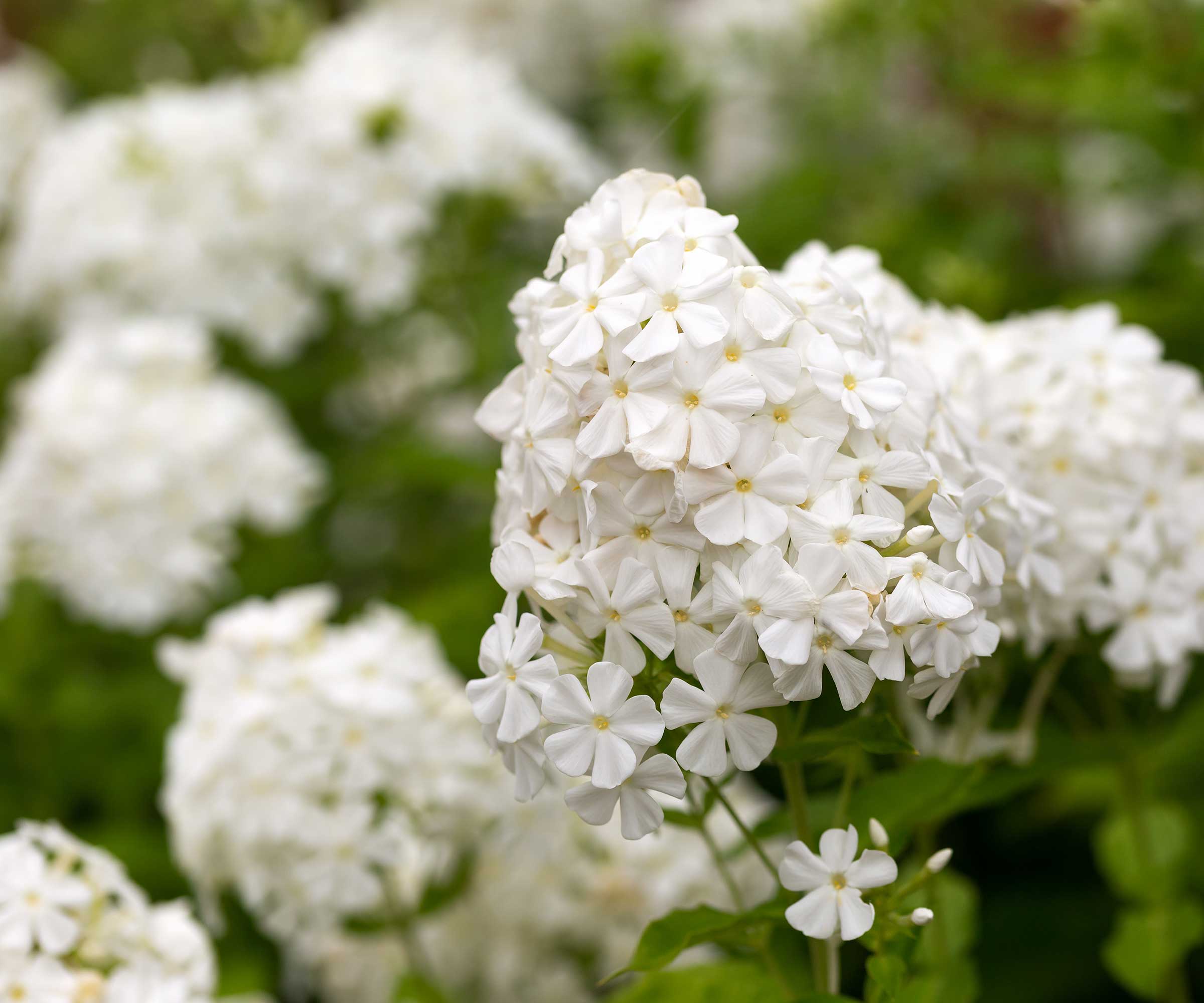
Phlox is a classic cottage garden plant that produces masses of star-shaped flowers each summer. There are many types of phlox to grow, but it is the larger perennial border phloxes which benefit from being chopped, as opposed to the annual, alpine, and creeping phloxes.
The border phloxes are low-maintenance plants for garden borders hardy in US hardiness zones 3-9, depending on the particular variety. If you cut back phlox by a third in late spring you will get compact plants that can bloom from summer into fall.
Continue to deadhead phlox during the season, and the number of flowers will increase.
6. Black-eyed Susan
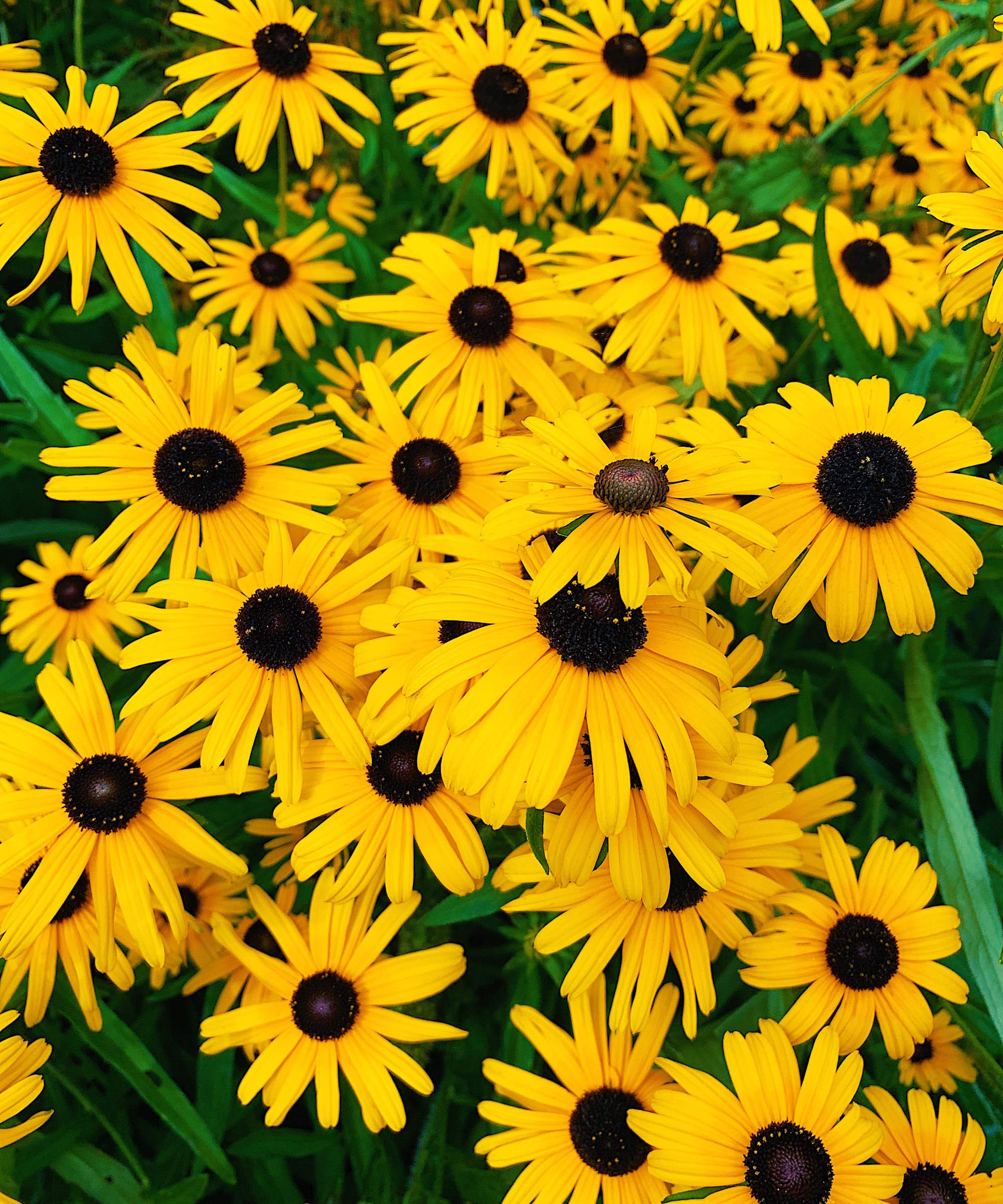
Black-eyed Susans are also known as rudbeckias and they get the name from the dark center of their daisy-like blooms. They are another plant that comes in annual and perennial varieties, with the latter suitable for being chopped.
Black-eyed Susans are most well-known for having yellow blooms, but there is a range of colors and you can get varieties with orange, red, or green flowers.
Black-eyed Susans bloom from summer through to the first frosts, but one key benefit of cutting back black-eyed Susans is that the plants stay more compact. As they can grow very tall, the plants will be at less risk of flopping so you can enjoy the blooms, albeit on shorter and bushier plants.
7. Nepeta
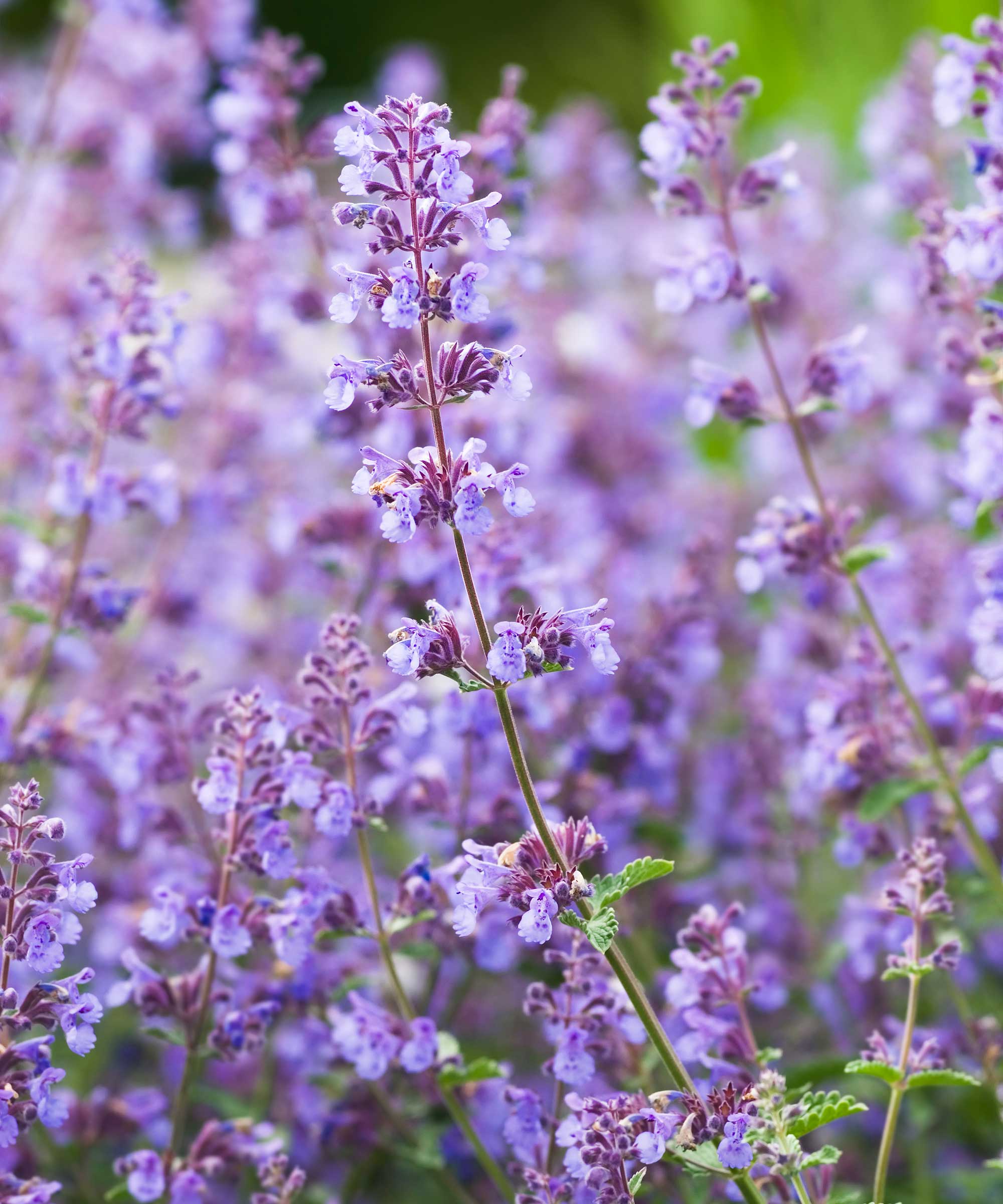
Nepeta is a flowering perennial adored for its aromatic grey-green foliage and purple flowers. It is a great low-maintenance plant for borders as nepeta is drought and heat-tolerant.
The plant, also commonly called catmint, is known for being popular with bees, butterflies, and other beneficial insects during the summer and fall months.
Chopping back nepeta, either the whole plant or sections, means you can provide bees with a food source during the later months of the growing season.
Tools for chopping back herbaceous perennials
A pair of pruning shears made of premium titanium steel and with ergonomically designed non-slip handles that are strong, lightweight, and comfortable. Pruners can cut up to 3/4" diameter branches.
Plant shears featuring Power-Lever technology, sharp precision-ground serrated steel blades, and a SoftGrip handle for a variety of gardening tasks. The serrated steel blades built to stay sharp with self-sharpening technology.
A multi-purpose sharpener for garden tools that is compact enough to carry in your pocket. The tool sharpens blades of any size with just two or three swipes and comes with a removable sponge soaked with lubricating oil to clean and lubricate your blades.
FAQs
Can I Chelsea chop salvias?
If you grow salvia, these perennials can be trimmed in late May or early June and will quickly respond by putting on a new flush of growth. Established perennial types of salvia can be successfully pruned in this way to get compact and bushy plants that will flower later in the season, providing food for pollinators in the fall.
Can you Chelsea chop daisies?
You can cut back shasta daisies in May and June to encourage compact and bushy growth and more flowers. Deadheading shasta daisies throughout the summer should also be seen as essential to give yourself more blooms over a longer period.
Do you have many of the above perennials in your beds and borders? The to-do list for this month may already be sizable, as there are vegetables and perennial flowers to plant in June and also a range of plants to prune in June, but do not overlook the benefits of chopping these perennials back. It can be quick and easy and does come with tangible rewards.







